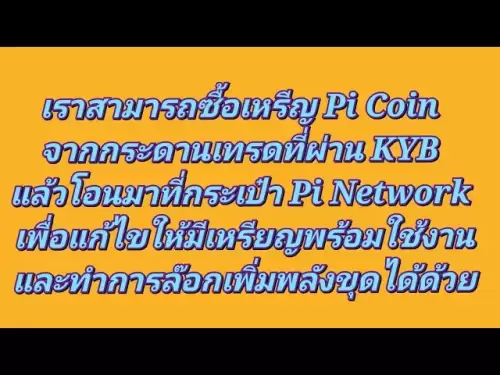 |
|
 |
|
 |
|
 |
|
 |
|
 |
|
 |
|
 |
|
 |
|
 |
|
 |
|
 |
|
 |
|
 |
|
 |
|
ブロックチェーンのスケーラビリティの問題の明らかな範囲を確認するために簡単なGoogle検索を行う必要がありますが、それがまだ大きな問題であるという概念は真実ではありません。

One only needs to do a quick Google search to see the apparent extent of the blockchain scalability problem, but the notion that it’s still a major issue is untrue.
ブロックチェーンのスケーラビリティの問題の明らかな範囲を確認するために、すばやいGoogle検索を行う必要がありますが、それがまだ大きな問題であるという概念は真実ではありません。
In fact, numerous solutions have not only been proposed but also already implemented in real-world scenarios. The fact that scalability continues to be considered an issue is due to the enduring popularity of more established blockchains such as Ethereum and Bitcoin, but many people fail to realize that even these networks have the problem under control.
実際、多くのソリューションが提案されているだけでなく、実際のシナリオにもすでに実装されています。スケーラビリティが問題と見なされ続けているという事実は、EthereumやBitcoinなどのより確立されたブロックチェーンの永続的な人気によるものですが、多くの人々は、これらのネットワークでさえ問題があることに気付かない。
Unfortunately, it seems that many people just aren’t aware of the best solutions to blockchain scalability, or they don’t know how to access them, hence the myth that it’s a problem that still needs to be addressed. But with any luck, that will soon change.
残念ながら、多くの人々は、ブロックチェーンのスケーラビリティに対する最良の解決策を認識していないか、それらにアクセスする方法を知らないようです。したがって、それはまだ対処する必要がある問題であるという神話です。しかし、運が良ければ、それはすぐに変わります。
Why couldn’t blockchains scale?
ブロックチェーンがスケーリングできなかったのはなぜですか?
Blockchains are decentralized networks that enable users to interact with one another without any central authority. They’re made up of independent nodes that run the blockchain software, with each one having equal rights to every other node in the network. These nodes work together to process transactions and reach agreement on the state of the ledger, using specialized consensus mechanisms.
ブロックチェーンは、ユーザーが中央当局なしで互いに対話できるようにする分散ネットワークです。それらは、ブロックチェーンソフトウェアを実行する独立したノードで構成されており、それぞれがネットワーク内の他のすべてのノードと平等な権利を持っています。これらのノードは協力して、トランザクションを処理し、専門のコンセンサスメカニズムを使用して、元帳の状態に関する合意に達します。
As the popularity of early networks like Bitcoin and Ethereum grew, the scalability of blockchain was indeed a major challenge. As the number of nodes increased and more people started using these networks, they started to experience congestion, and transactions that once took a few seconds would experience delays of minutes, and eventually even hours. It’s not unheard of for some Bitcoin user to wait several days before their transactions are confirmed!
ビットコインやイーサリアムなどの初期のネットワークの人気が高まったため、ブロックチェーンのスケーラビリティは実際に大きな課題でした。ノードの数が増加し、より多くの人々がこれらのネットワークを使用し始めると、彼らは輻輳を経験し始め、かつて数秒かかったトランザクションは数分の遅れ、そして最終的には数時間さえ経験します。一部のビットコインユーザーが、取引が確認されるまで数日待つことは前代未聞ではありません!
It’s not difficult to understand why this happens because Bitcoin’s architecture means it can only process around seven transactions per second. That’s pretty poor compared to Visa, which can handle several thousand transactions per second, and it’s easy to see how a backlog can quickly build up when the network is busy.
ビットコインのアーキテクチャは、1秒あたり約7つのトランザクションしか処理できないことを意味するため、なぜこれが起こるのかを理解することは難しくありません。これは、1秒あたり数千のトランザクションを処理できるVisaに比べてかなり貧弱であり、ネットワークがビジーであるときにバックログが迅速に蓄積する方法を簡単に確認できます。
Ethereum is similarly limited, and there are several reasons for this poor performance. One of the main limitations is the processing power of blockchain nodes. In the case of Bitcoin, which utilizes a proof-of-work consensus mechanism where nodes compete to solve increasingly complex mathematical puzzles, the hardware requirements increase progressively over time. Whereas it was once possible to “mine” Bitcoin using a PC, these days it’s necessary to invest in thousands of dollars worth of high-end processors to be able to compete successfully in the race to process transactions. These hardware problems constrain the transaction throughput of nodes and can also impact Ethereum, albeit to a lesser extent. Because each of the nodes must achieve consensus before new blocks are created, this holds back the network.
イーサリアムも同様に制限されており、このパフォーマンスの低下にはいくつかの理由があります。主な制限の1つは、ブロックチェーンノードの処理能力です。ノードがますます複雑な数学パズルを解決するために競合する仕事の証明コンセンサスメカニズムを利用するビットコインの場合、ハードウェアの要件は時間とともに徐々に増加します。かつてPCを使用してビットコインを「マイニング」することは可能でしたが、最近では数千ドル相当のハイエンドプロセッサに投資して、トランザクションを処理するためのレースで成功裏に競争できるようにする必要があります。これらのハードウェアの問題は、ノードのトランザクションスループットを制約し、程度は低いにもかかわらずイーサリアムに影響を与える可能性があります。各ノードは、新しいブロックが作成される前にコンセンサスを達成する必要があるため、これによりネットワークが妨げられます。
Another key challenge is the limited block size of Bitcoin and Ethereum. In the early days, Bitcoin block sizes were capped at around 1 megabyte, meaning each block could include roughly 2,200 transactions. However, the network’s architecture only supports one new block being added every 10 minutes, creating a bottleneck as the number of transactions increases.
もう1つの重要な課題は、ビットコインとイーサリアムのブロックサイズが限られていることです。初期の頃は、ビットコインブロックのサイズが約1メガバイトでキャップされていました。つまり、各ブロックには約2,200のトランザクションが含まれる可能性があります。ただし、ネットワークのアーキテクチャは、10分ごとに追加される新しいブロックのみをサポートしているため、トランザクションの数が増えるとボトルネックが作成されます。
ZK-proofs & sharding
Zk-Proofs&Sharding
Scalability is still a problem for Bitcoin and Ethereum, but that’s not really the case on newer blockchains that feature optimized architectures.
スケーラビリティは、ビットコインとイーサリアムにとって依然として問題ですが、最適化されたアーキテクチャを特徴とする新しいブロックチェーンでは、実際にはそうではありません。
One of the most impressive solutions comes from Aleo, a confidential Layer-1 network that’s focused on enabling private transactions to encourage institutional adoption. It has implemented a combination of zero-knowledge proofs and a novel sharding technique that dramatically increases the number of private transactions it can process.
最も印象的なソリューションの1つは、プライベートトランザクションが制度的採用を促進できるようにすることに焦点を当てた機密レイヤー-1ネットワークであるAleoに由来しています。ゼロ知識証明と、処理できるプライベートトランザクションの数を劇的に増やす新しいシャーディング技術の組み合わせを実装しました。
With its ZK-proofs, Aleo is enabling blockchain users to send funds privately to any other user by obscuring the wallet addresses of themselves and the recipients, in addition to the amounts sent. As one of the most sophisticated blockchain privacy technologies, ZK-proofs ensure transactions are completely untraceable. But there’s another advantage to ZK-proofs as well, because by masking many of the transaction details, it means there’s less data for the network to process, reducing the computational load. As a result, transactions can be processed faster.
ZK-Proofsを使用して、ALEOはブロックチェーンユーザーが、送信された金額に加えて、自分自身と受信者のウォレットアドレスを不明瞭にすることにより、他のユーザーに個人的に資金を送信できるようにしています。最も洗練されたブロックチェーンプライバシーテクノロジーの1つとして、ZKプルーフは、トランザクションが完全に追跡できないことを保証します。しかし、ZKプルーフにも別の利点があります。これは、トランザクションの詳細の多くをマスキングすることで、ネットワークが処理するデータが少なくなり、計算負荷が削減されることを意味するためです。その結果、トランザクションはより速く処理できます。
As for sharding, this means dividing up the network into smaller fragments called “shards”, which can be managed by the network more efficiently. In the case of Aleo, this means processing transactions and smart contracts separately, in parallel, to increase the overall throughput. Sharding also provides privacy benefits. Because only one node is responsible for processing certain transactions, the details will not be shared with the rest of the network, only the final outcomes.
シャードに関しては、ネットワークを「シャード」と呼ばれる小さなフラグメントに分割することを意味します。これは、ネットワークによってより効率的に管理できます。 ALEOの場合、これはトランザクションとスマート契約を個別に処理して、全体的なスループットを増加させることを意味します。シェルディングはプライバシーの利点も提供します。特定のトランザクションの処理に責任があるのは1つのノードのみであるため、詳細はネットワークの残りの部分と共有されず、最終的な結果のみが共有されます。
Aleo isn’t the only blockchain to employ sharding, but the way it handles things is pretty innovative. It utilizes a number of components, with the most critical one being a dynamic sharding mechanism that allows the size and number of shards to be altered based on the current network load. By dynamically creating and merging shards, Aleo provides more flexibility to support massive transaction volumes when traffic increases, at the cost of using more energy. Then, it can scale down during quieter times to save energy.
アレオはシャードを使用する唯一のブロックチェーンではありませんが、物事を処理する方法はかなり革新的です。多くのコンポーネントを利用しており、最も重要なコンポーネントは、現在のネットワーク負荷に基づいてシャードのサイズと数を変更できる動的なシャードメカニズムです。アレオは、より多くのエネルギーを使用して、トラフィックが増加すると大規模なトランザクション量をサポートするための柔軟性をより柔軟に提供します。その後、エネルギーを節約するために、静かな時期にスケールダウンできます。
Load balancing is also
負荷分散もそうです
免責事項:info@kdj.com
提供される情報は取引に関するアドバイスではありません。 kdj.com は、この記事で提供される情報に基づいて行われた投資に対して一切の責任を負いません。暗号通貨は変動性が高いため、十分な調査を行った上で慎重に投資することを強くお勧めします。
このウェブサイトで使用されているコンテンツが著作権を侵害していると思われる場合は、直ちに当社 (info@kdj.com) までご連絡ください。速やかに削除させていただきます。
-

-

-

-

-

-

-

- Tether Makes Strides in the First Quarter of 2025, Expanding Its Role into Traditional Finance, Sustainable Infrastructure, and Now Sports / Entertainment as Well
- 2025-06-09 20:45:12
- With a reported operating profit exceeding $1 billion, near-record U.S. Treasury holdings, and a range of investments, Tether is positioning itself as a multifaceted financial industry participant.
-

-



























































